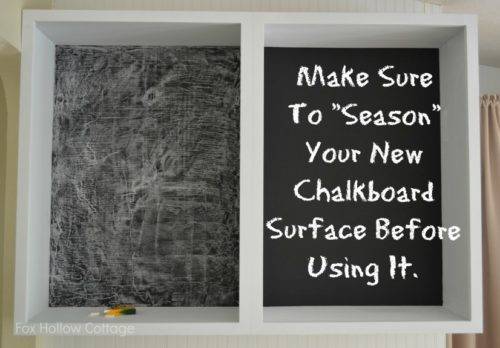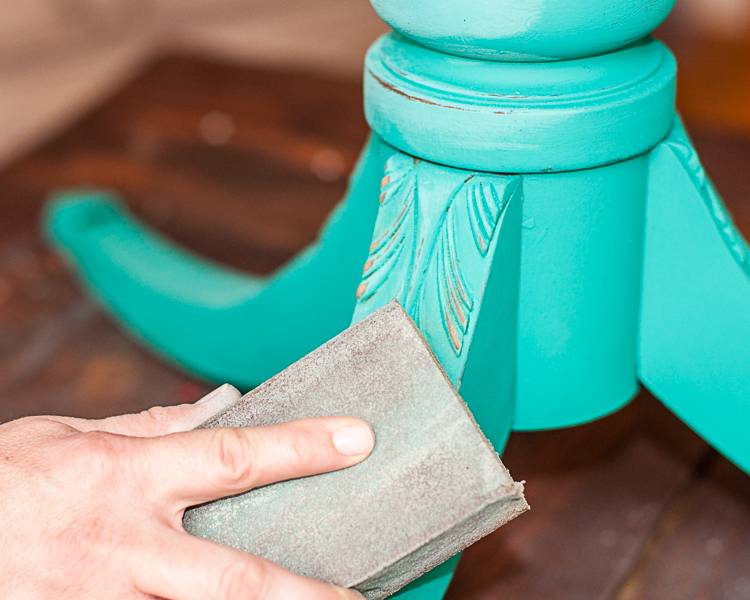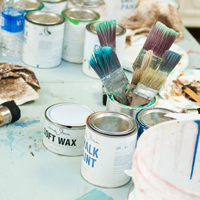Virtually every field has its own vocabulary. Furniture refinishing and painting is no exception. You’ll have difficulty understanding the paint process if you don’t understand the vocabulary we use. Here are some of the most commonly used refinishing terms that we use on a daily basis and their meanings.
Distressing
In the decorative arts, distressing is the activity of making a piece of furniture or object appear aged and older, giving it a “weathered look”, and there are many methods to produce an appearance of age and wear. When we use the term distressing, we are referring to the process of removing the paint off specific areas of the furniture. Distressing can be either manufactured, as is the case when we distress Chalk Paint® or natural, as is the case with the natural “chippy” look of Miss Mustard Seed’s Milk Paint.
A manufactured distressed finish can be done with different tools, but most commonly used is sandpaper. The rougher you want your distressed finish, the coarser you will want your sandpaper. For stubborn paint finishes (like latex or oil based finishes) or for layers of paint finishes (such as multiple coats of Chalk Paint®), you can even go so far as to use a fine sandpaper on an electric sander. For a more controlled distressed finish that preserves the color of the substrate, you can distress with a fine sandpaper or even wet distress prior to waxing with a damp washcloth or baby wipe.

Topcoat
When we refer to topcoats, we are talking about any product that provides a protective finish. 90% of the time, when we are discussing appropriate topcoats, we are referring specifically to wax. The other 10% of the time we will recommend a liquid topcoat such as Tough Coat, Annie Sloan Lacquer or Hemp Oil.
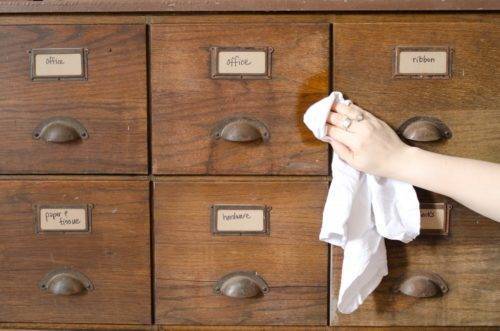
I will ALMOST NEVER recommend a liquid topcoat for indoor furniture finishes or painted kitchen cabinets (which you can read more about why here). Hemp Oil is ideal for dry and thirsty wood finishes or paint finishes that cover dry/raw wood. I recommend Lacquer for painted floors or more non-traditional paint surfaces such as counter tops or tile. Tough Coat is good in some instances on Milk Paint finishes to hold down a chipped finish or in between coats of paint to prevent bleed through.
Bleed Through
Bleed through is the discoloration of the paint finish as a result of the tannins in the wood and or stained finish leeching through the paint. It is most common on oak wood, maple finishes especially if the original varnish is chipped or scratched and mahogany and cherry wood. Bleed through can be mitigated by applying a thin coat of Tough Coat or Shellac and then repainting. You can read more about the process of correcting bleed-through here.
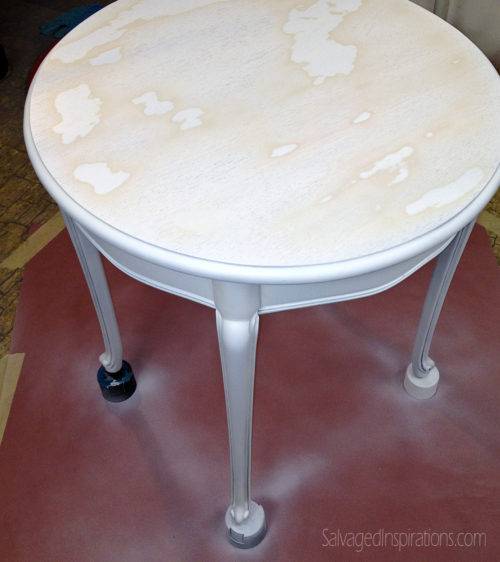
Antiquing
When we refer to antiquing, we are referring to the general patina of a finished piece of furniture. It is a finish that can be both distressed as well as having a weathered look as a result of the dark wax. At the shop, the term antiquing is almost always synonymous with dark wax or antiquing wax.
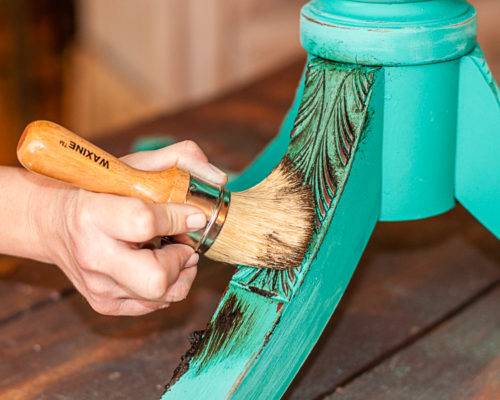
Wash
Washes are exactly how they sound; a paint finish that is literally washed off. The process of washing is thinning down the paint with water, applying to a surface then wiping it back with a towel or rag leaving just a hint of the color. Washes can be applied over paint finishes or raw wood. They are best suited for grainy woods, such as deep oak or knotted pine, which allows the paint to settle into the texture of the wood. Washes do not work well on tight wood, such as maple, cherry or mahogany because there isn’t any place for the paint to settle.
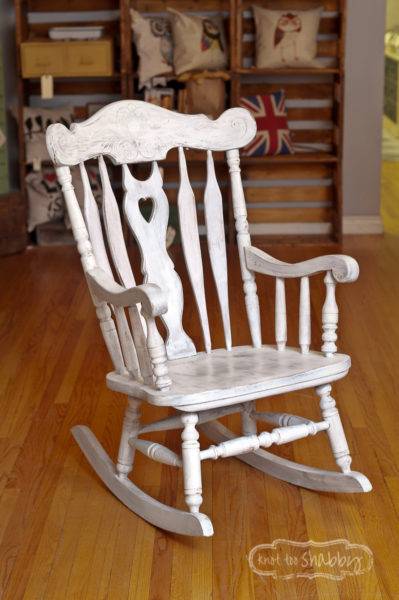
Washes can also be used to layer paint colors to add depth and variation. They can be subtle or dramatic depending on how thin the paint is and how much you wipe it back.
Paint-Staining
Any conversation regarding stained finishes is always conducted with the assumption that you are staining raw wood. Staining with paint is very similar to the process of staining with more traditional stain products. However, paint-staining is much cleaner, safer for the environment and less expensive (because you can use a single product for multiple finishes). Like all wood staining, the original varnish or polyurethane finish must be removed and the stain should be sanded back to the original wood finish. The paint is then thinned with water and applied in the same fashion you would apply a stain. Brush it into the wood and then use a soft cloth to remove the excess. We use Miss Mustard Seed’s Curio or Annie Sloan Honfleur to do traditional dark wood finishes. But, you can use the colors to stain wood, too.
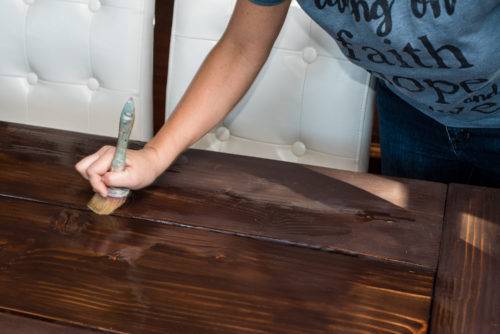
Curing
All paints require several weeks to “cure.” The curing process is the chemical change that the paint undergoes as materials in the product evaporate. The paint will not achieve its full strength until it is completely cured. It will be easier to scratch or stain. Typically, paint will be about 80-90% cured within a few days and completely cured within a couple of weeks. During this time of curing, you should treat your furniture with extra care and leave it exposed (meaning, don’t throw a table cloth on that freshly painted table).
Burnishing
To burnish a paint finish is to “polish” it by rubbing vigorously with a fine material such as very fine sandpaper (1200 grit or higher) or even a paper bag. This is typically done in lieu of waxing for an outdoor finish (such as pottery, a front door or patio furniture). Burnishing is most commonly referred to the smoothing and shining of metal, but the technique has a similar effect on paint. The heat from the friction rubs away soft, dried cell walls and exposes the harder cells. These hard cell walls do not absorb stain or finishes, but they have a glossy sheen that makes finishing products unnecessary. Applying a wax or other topcoat on a burnished finish is unnecessary or ineffective because of the chemical change the paint and wood undergoes with burnishing.
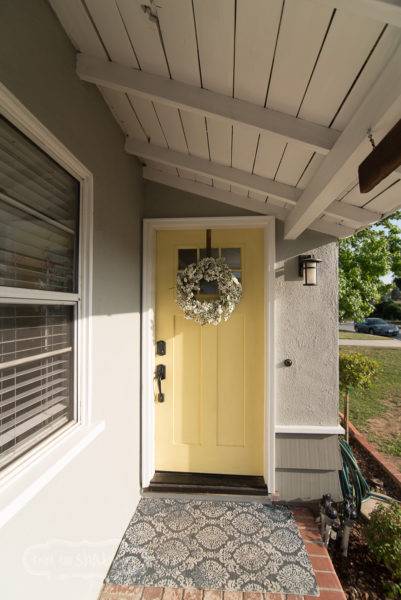
Buffing (or Polishing)
Buffing is the act of leveling out residue or excess of a certain applied product, in our case wax finishes. In many cases it will either increase the sheen, or even out the residue to create a uniform look. The term “buffing” is sometimes used to refer to polishing the wax finish which is perceived as being a more gentle process than buffing. Either way, polishing and buffing are one and the same. Buffing (or polishing) too soon can create a cloudy or streaky look on your paint finish and as a result, should be held off for a few hours after you have applied the wax.
Furniture Restoration vs. Furniture Refinishing
Furniture restoration is the process of maintaining the integrity of the original (albeit worn) wood finish most commonly found on antique pieces. When we talk about restoration, we are discussing how to restore an old piece to its former glory in its original wood state. We don’t do furniture restoration due to the laborious aspect of it and the necessary tools required to do it well.
Furniture refinishing can be synonymous with furniture restoration, but at our shop when we talk about refinishing, we are referring to painted finishes. Sometimes furniture refinishing can incorporate elements of wood restoration, but in a moderate sense (i.e., drawer faces or surfaces).
Alligatoring
When we refer to alligatoring, we are referring to the effect caused by the paint refusing to adhere to the finish. As the paint is applied, rather than absorbing or adhering to the finish, it “pools” together causing it too look like alligator scales. Other terms that might refer or be confused with alligatoring is crackeling, cracking or crazing (which are terms we use for other effects). Alligatoring is most common on foil finishes, manufactured (or out of the box) furniture, furniture that has been exposed to oil based spray cleaners, smokers furniture, etc.
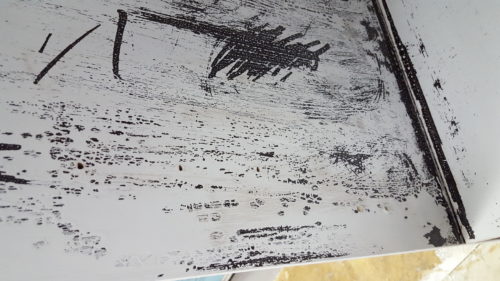
Seasoning
Seasoning is the process of preparing a chalkboard for lettering and/or art. Every chalkboard, whether store bought or hand-painted should be seasoned by applying a layer of chalk over the entire finish prior to being used for text. Just take a piece of chalk on it’s side and run it along the entire surface. Wipe it back to clear the surface. Seasoning ensures that the chalk doesn’t “burn” into the paint finish, leaving a shadow if itself when you erase it later.
